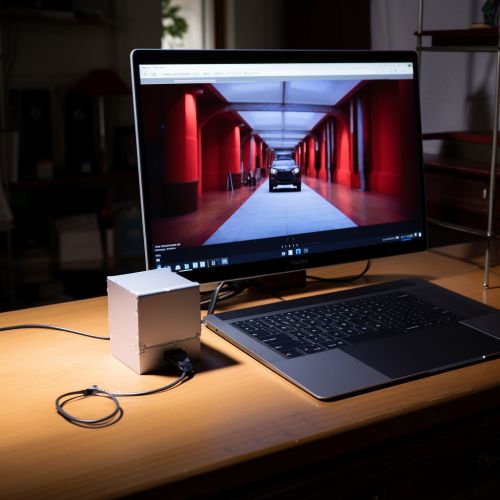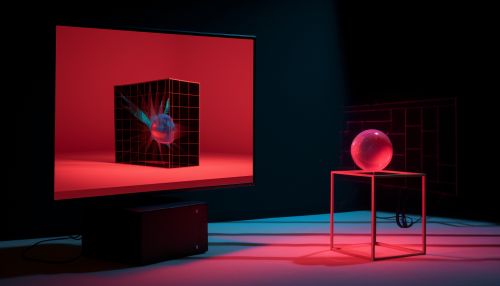Object tracking
Introduction
Object tracking, in the context of computer vision, refers to the process of following a specific object's movement over time in a sequence of images or video frames. This process involves detecting the object of interest in each frame of the video and associating the object across the frames. Object tracking has a wide range of applications in various fields, including video surveillance, autonomous driving, human-computer interaction, and medical imaging.


Types of Object Tracking
There are several types of object tracking techniques, each with its unique strengths and weaknesses. The choice of technique often depends on the specific requirements of the application.
Point Tracking
Point tracking involves tracking a set of points from frame to frame. This technique is often used when the object of interest can be represented by a set of points, such as the corners of a bounding box. The Kanade-Lucas-Tomasi (KLT) feature tracker is a popular point tracking algorithm.
Kernel Tracking
Kernel tracking, also known as template tracking, involves tracking the object of interest based on its appearance. The object is represented by a template, which is a patch of pixels, and the goal is to find the location of the template in the subsequent frames. The Mean Shift algorithm is a well-known kernel tracking algorithm.
Silhouette Tracking
Silhouette tracking involves tracking the object of interest based on its shape. This technique is often used when the object of interest has a distinctive shape that can be extracted from the background. The Active Contour Model, also known as snakes, is a common silhouette tracking algorithm.
Challenges in Object Tracking
Object tracking is a challenging task due to several factors. These challenges can be broadly classified into three categories: appearance variation, motion variation, and occlusion.
Appearance Variation
The appearance of an object can change significantly over time due to changes in illumination, viewpoint, scale, and intra-class variation. For example, the appearance of a car can change drastically when it is viewed from different angles or under different lighting conditions.
Motion Variation
The motion of an object can also change over time. An object can move in unpredictable ways, making it difficult to predict its location in the next frame. Furthermore, the motion of an object can be affected by the motion of the camera, adding another layer of complexity to the tracking task.
Occlusion
Occlusion occurs when the object of interest is partially or fully blocked by other objects in the scene. This makes it difficult to detect the object and maintain its identity.
Object Tracking Algorithms
There are numerous algorithms for object tracking, each designed to handle different types of objects and scenarios. Some of the most popular algorithms include the Kalman filter, the particle filter, and the Multiple Hypothesis Tracking (MHT) algorithm.
Kalman Filter
The Kalman filter is a recursive algorithm that uses a series of measurements observed over time to estimate the state of a process, in this case, the position of an object. It is particularly effective for tracking objects that move in a predictable manner.
Particle Filter
The particle filter, also known as the Monte Carlo Localization method, is a recursive Bayesian filtering algorithm that uses a set of particles to represent the posterior distribution of some stochastic process. It is particularly effective for tracking objects that move in a non-linear or non-Gaussian manner.
Multiple Hypothesis Tracking
Multiple Hypothesis Tracking (MHT) is a data association technique that generates multiple hypotheses about the state of an object and selects the most likely one based on a cost function. It is particularly effective for tracking multiple objects in a scene.
Applications of Object Tracking
Object tracking has a wide range of applications in various fields. Some of the most common applications include video surveillance, autonomous driving, human-computer interaction, and medical imaging.
Video Surveillance
In video surveillance, object tracking is used to monitor the movement of people, vehicles, and other objects in a scene. It can help detect suspicious activities, track the movement of individuals in crowded scenes, and provide valuable insights for security and law enforcement.
Autonomous Driving
In autonomous driving, object tracking is used to track the movement of other vehicles, pedestrians, and obstacles in the environment. It is a crucial component of the perception system of autonomous vehicles, enabling them to navigate safely and efficiently.
Human-Computer Interaction
In human-computer interaction, object tracking is used to track the movement of the user's hands, eyes, or other body parts. This can enable gesture-based control, gaze tracking, and other forms of natural interaction with computers.
Medical Imaging
In medical imaging, object tracking is used to track the movement of organs, tissues, and other structures in the body. This can enable image-guided surgery, motion compensation in imaging procedures, and other medical applications.
